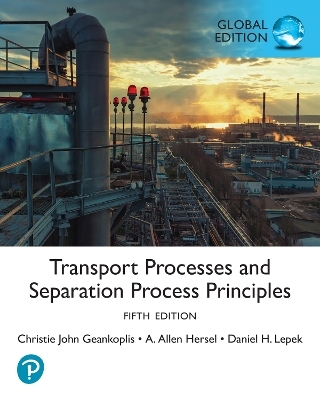
Microbiology and Chemistry for Environmental Scientists and Engineers
CRC Press (Verlag)
978-1-138-42432-6 (ISBN)
- Titel z.Zt. nicht lieferbar
- Versandkostenfrei innerhalb Deutschlands
- Auch auf Rechnung
- Verfügbarkeit in der Filiale vor Ort prüfen
- Artikel merken
Biological and chemical processes play a key role in the treatment of domestic wastewater and are becoming increasingly important in tackling the problems caused by industrial wastes. The first edition of this popular text focused on microbial systems and wastewater processes that are implemented in a treatment plant. While maintaining this approach, this revised edition also incorporates components that cover the fundamental aspects of inorganic and organic chemistry relating to water treatment and pollution.Microbiology and Chemistry for Environmental Scientists and Engineers provides the reader with an understanding of the complex biological and chemical issues involved in environmental science and engineering. A chapter on water quality includes the revised chemical and microbiological standards, which will come into force under the new EC drinking water directive. Chemical aspects of water pollution emphasise some of the most dangerous chemical substances prevalent in the environment today.This book will be a valuable addition to the library of practising environmental engineers and scientists, and an essential text for undergraduate and postgraduate students taking courses in environmental, civil and public health engineering.
J. Lester is Professor of Water Technology and J. Birkett is Lecturer in Environmental Chemistry and Pollution, at Imperial College of Science Technology and Medicine, London.
Introduction to microbiology. 1.1 Origins of microbiology 1.2 History of sanitary microbiology 1.3 Principles of microbiology Bacteria. 2.1 Introduction 2.2 Structure of bacterial cell 2.3 Identification of bacteria 2.4 Classification of bacteria The eucaryotic protists. 3.1 Introduction 3.2 Algae 3.3 Protozoa 3.4 Fungi Viruses and metazoa. 4.1 Introduction 4.2 Viruses 4.3 Metazoa Laboratory techniques. 5.1 Introduction 5.2 Safety precautions in microbiological laboratories. 5.3 Aseptic techniques 5.4 Cultivation of micro-organisms 5.5 Microscopy 5.6 Enumeration of micro-organisms 5.7 Staining methods 5.8 Microbial assays Introduction to chemistry. 6.1 Introduction 6.2 The atom 6.3 Periodic table and properties of elements 6.4 Chemical bonding 6.5 Stoichiometry and chemical equilibria 6.6 Laws of chemistry 6.7 pH and activity 6.8 Oxidation-reduction reactions. Organic chemistry. 7.1 Introduction 7.2 The carbon atom 7.3 Aliphatic compounds 7.4 Nitrogen-containing compounds 7.5 Aromatic compounds 7.6 Heterocyclic compounds Biological molecules. 8.1 Introduction 8.2 Isomerism 8.3 Proteins 8.4 Polysaccharides 8.5 Nucleic acids 8.6 Lipids Microbial metabolism. 9.1 Introduction 9.2 Thermodynamics and chemical equilibrium 9.3 Energy-yielding metabolism 9.4 Biosynthesis Microbial growth. 10.1 Introduction 10.2 Mathematical description of growth 10.3 Growth curve 10.4 Factors affecting growth 10.5 Continuous cultivation 10.6 Growth on two substrates 10.7 Mixed cultures Water quality chemistry. 11.1 Introduction 11.2 The water molecule 11.3 Oxygen demand 11.4 Acidity and alkalinity 11.5 Hardness and metal ions in water 11.6 Nutrients 11.7 Water quality standards Environmental water chemistry. 13.1 Introduction 13.2 Sources of pollutants 13.3 Groundwater pollution 13.4 Marine pollution 13.5 Physical pollutants 13.6 Chemical pollutants 13.7 Toxic pollutants Aerobic wastewater treatment processes. 14.1 Introduction 14.2 Preliminary and primary treatment 14.3 Objectives of waste-water treatment 14.4 Activated sludge processes 14.5 Substrate removal and growth in biomass recycle systems 14.6 Biological activities in activated sludge 14.7 Operational modifications 14.8 Design modifications 14.9 Percolating filters Anaerobic wastwater treatment. 15.1 Introduction 15.2 Anaerobic sludge digestion 15.3 Biological activities in anaerobic digestion 15.4 Waste stabilisation ponds Composting. 16.1 Introduction 16.2 Process description 16.3 Microbiology of composting 16.4 Fate of pathogens during composting Industrial wastewater treatment. 17.1 Introduction 17.2 Trade effluent control 17.3 Biological aspects of industrial waste treatment 17.4 Aerobic treatment processes 17.5 Anaerobic treatment processes Environmental microbiology. 18.1 Introduction 18.2 Biodegradation in the aquatic environment 18.3 Degradation in heterogeneous environments 18.4 Microbial activity in trace heavy metal cycling 18.5 Eutrophication 18.6 Microbiological indicators of pollution Pathogens. 19.1 Introduction 19.2 Modes of entry and transmission of pathogens 19.3 Diseases caused by waterborne pathogens Water treatment. 20.1 Introduction 20.2 Water treatment processes 20.3 Disinfection.
| Erscheinungsdatum | 07.10.2017 |
|---|---|
| Verlagsort | London |
| Sprache | englisch |
| Maße | 156 x 234 mm |
| Gewicht | 900 g |
| Themenwelt | Technik ► Umwelttechnik / Biotechnologie |
| Weitere Fachgebiete ► Land- / Forstwirtschaft / Fischerei | |
| ISBN-10 | 1-138-42432-3 / 1138424323 |
| ISBN-13 | 978-1-138-42432-6 / 9781138424326 |
| Zustand | Neuware |
| Haben Sie eine Frage zum Produkt? |
aus dem Bereich


